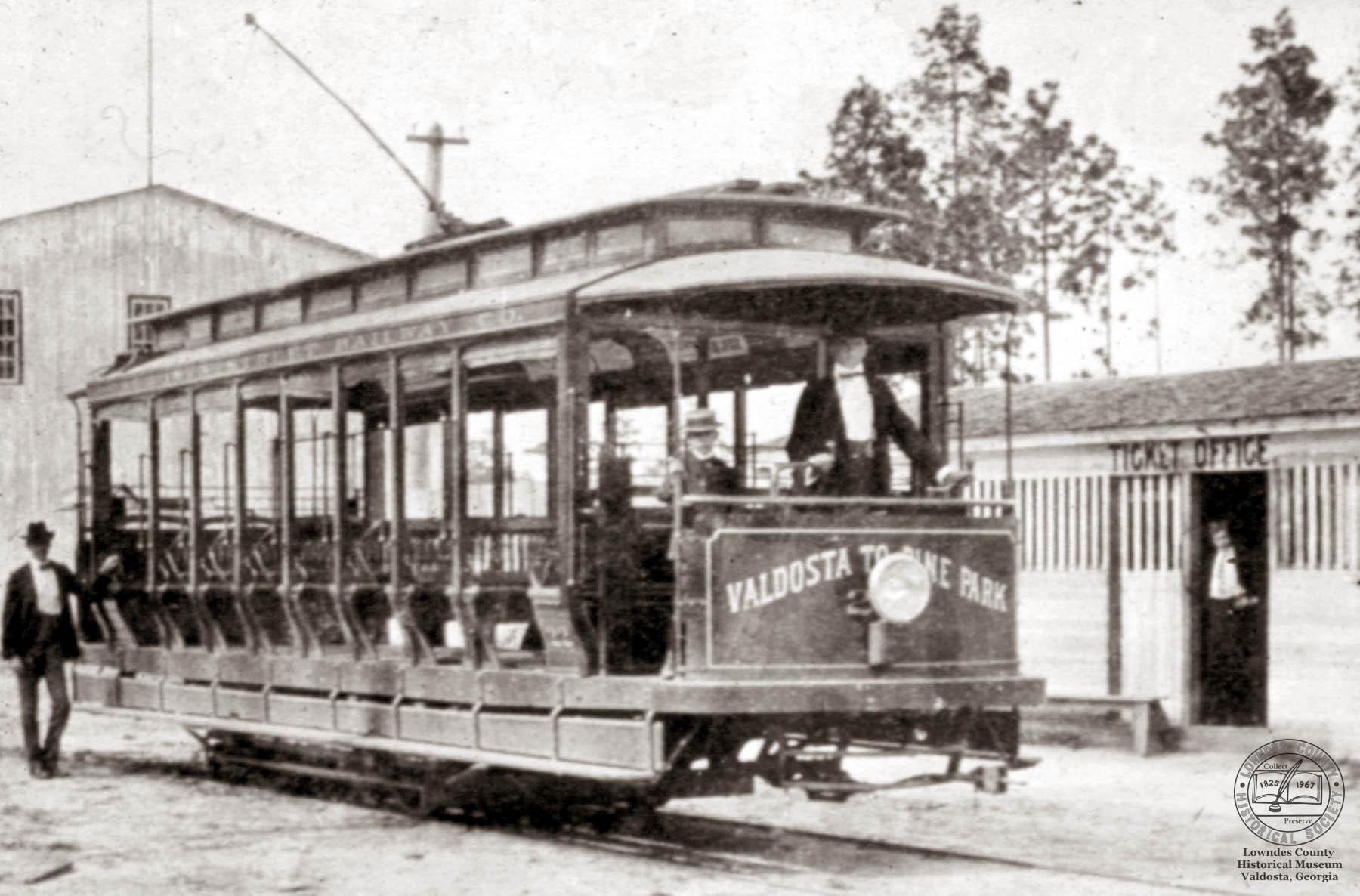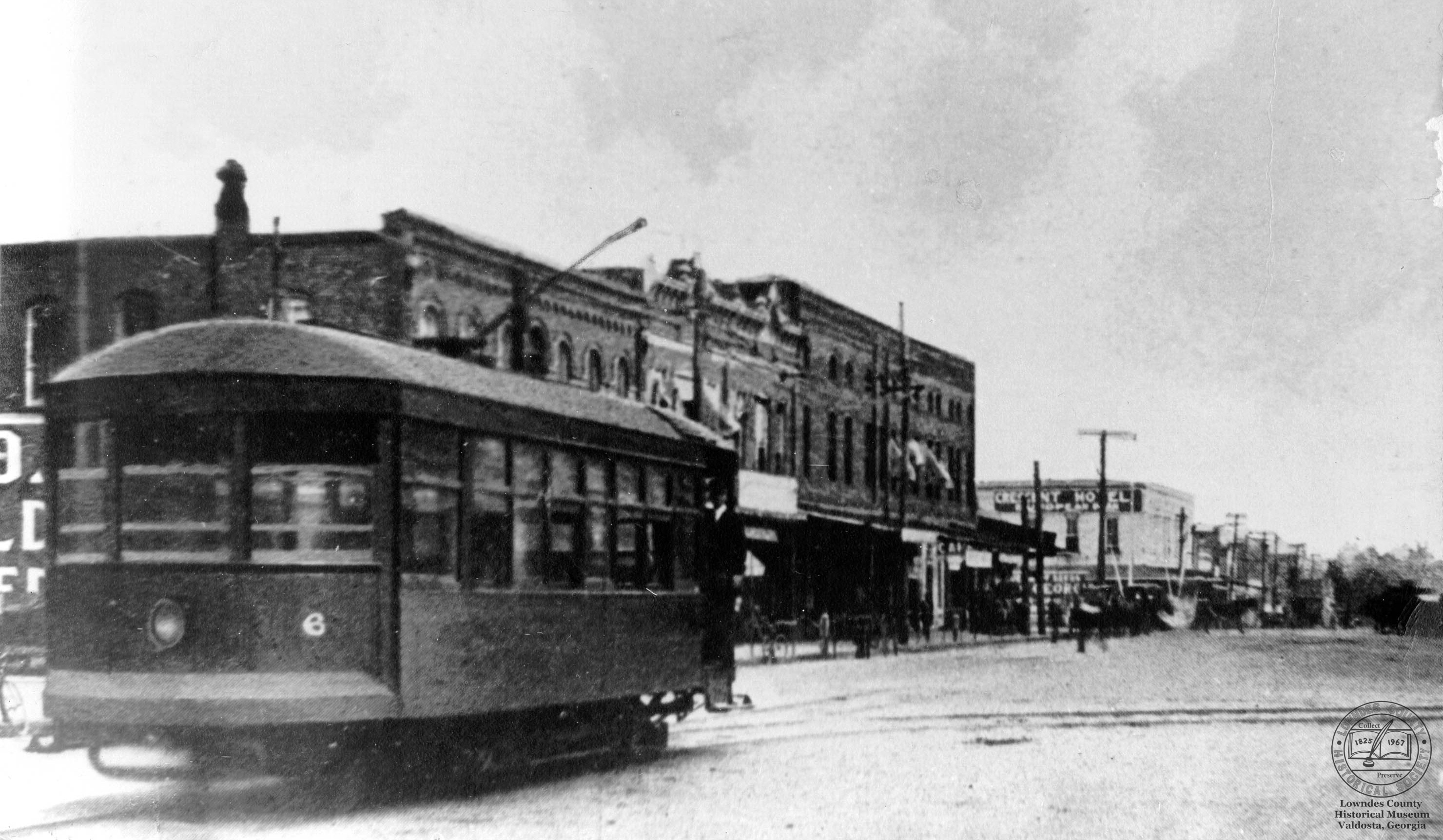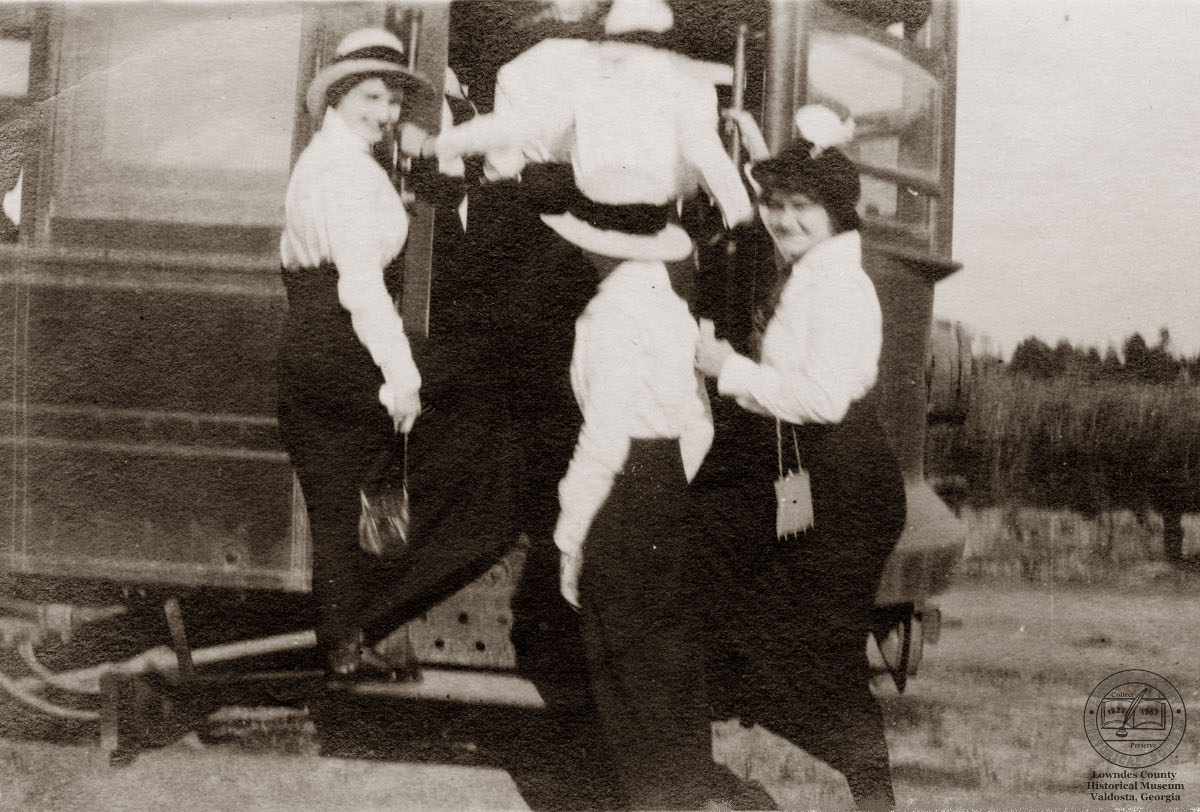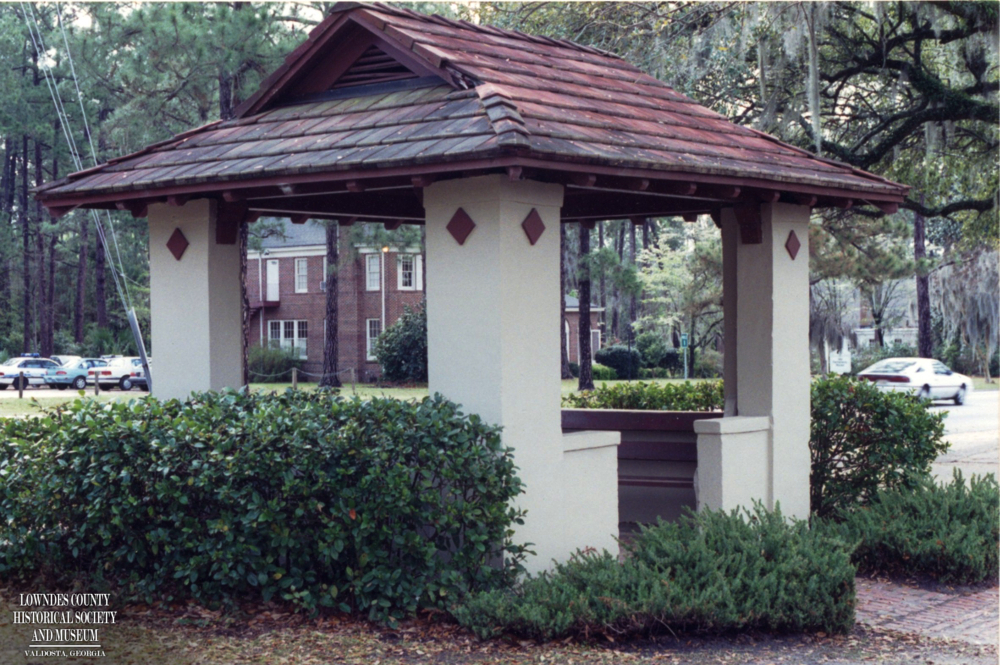In the early 1900s Valdosta was one of the smallest towns in America to have a trolley system.

One of the summer streetcars of Valdosta’s trolley system
In 1898, a bill was to be introduced in the general assembly to amend the charter of Valdosta, “so that the mayor and aldermen may be employed to grant franchise to street railways, etc., on the streets of Valdosta.”
It was planned that the new street car line run, at first, from a depot on West Hill Avenue to another railroad line depot downtown.
Actually, before this time, in 1889, a street railway had been planned for Valdosta and work was to begin at that time, July 1889. The Valdosta Street Railroad Company was to be formed and the incorporators were N. E. Fry, W. N. Harrell, W. T. Lane, W. L. Thomas, D. C. Ashley, B. W. Bentley and Louis Strickland. For some reason no line was built.
Not until May 1900 did work actually begin on the local electric railroad and power plant. A force of workmen were employed in tearing up the earth for the railroad, which would run from the Atlantic, Valdosta and Western railroad depot up Patterson Street to Pine Park. From Pine Park the planned course was to be east to Ashley Street and then south to Gordon Street. It would then turn to the west and connect with the main line at Patterson Street.
This was the year of the Exposition, the State Fair in South Georgia, and work was hurried along for that reason. Crowds of people were expected to invade Valdosta, and the street cars would carry them to the Fair. A great time and an even greater Fair were planned.
In July, a Mr. G. R. Scrugham, Superintendent of the Creaghead Engineering Company of Cincinnati, came to Valdosta to have charge of all the electrical work for the new car line. The ground was staked off to the Exposition grounds and a force of men put to work. The land was excavated and when the rails arrived, they were quickly laid. All work was to be completed by the first of September, and ready for the cars.
Superintendent Scrugham did his overhead work and all the electrical features. A Mr. A. F. Langford and a force of hands were in charge of the work of Laying the rails, Mr. Bentley of the Valdosta Electric & Power Company furnished power for the car line and all the machinery for enlarging his plant on the road. When the rails were laid and put in shape for operating the cars, he would be standing waiting. September was still the target date.
Many committees were formed to make this the best Fair ever. It was the first time the State Fair was ever to be held in South Georgia. Everyone concerned was determined to make it a big one. Surrounding counties were asked to help and the people pushed for the completion of the street car line to Pine Park.
By October 1st, the cars had not arrived for the street car line. The rails had been successfully laid, the trolley wires had been up for weeks. The cars, it was reported, were expected to arrive in a day or two. A skeptical public began to believe that they would arrive too late for use during the Fair.
Two weeks before the opening of the Fair the cars were shipped from St. Louis and later were traced to Montgomery where the train had broken down. The car line people sent a man to look after them and “push” them on the way to Valdosta. They came by way of Cordele and were transferred to the Georgia Southern there and arrived in Valdosta on October 22, exactly one week before the opening of the Fair. The workmen went to work getting things started down the tracks.
The electric road was initiated on Wednesday night, October 24, by a trolley ride of some of the officials of the road. “A dozen citizens went out to the Fair grounds and a toast was administered to the new road and its enterprising officials.”

Valdosta Streetcar traveling along Hill Avenue
In 1902, the line was extended to the Cotton Mill at Remerton. In May 1903, a large pavilion was built at the picnic grounds at the end of the car line at Remerton. The pavilion was 100 feet long and 50 feet wide. The area was called, Cranford Park, named for one of the backers of the car line.
It had been said that kids would put coins on the track “to watch the wheels spin and see the conductor get mad.”
From an article in the Valdosta Daily Times of July 11, 1906, it is written that the street railroad company was contemplating erecting its own power plant. The article states that the car line plans of the future called for a route of “a belt around the western border of Valdosta, starting from the Strickland Cotton Mills and running into Hill avenue beyond the old G. S. & F. depot, thence down Hill avenue to Patterson street.” It also states that Col. W. S. West was principal owner of the line, and “the company has been waiting for some time for the location of the Atlantic Coast Line and Georgia Southern & Florida depots to be definitely determined, before making the extension down Patterson Street.”
- Postcard of Patterson Street featuring the trolley heading south
- Postcard of downtown Valdosta as the trolley passes through the intersection of Patterson and Central Avenue
- Postcard of Valdosta’s trolley passing in front of First Methodist Church on Patterson Street
- Postcard of North Patterson Street where the trolley passed through residential areas.
The Valdosta Street Railway ran its last car on December 24, 1925. During the 1930s the tracks were paved over, and in the 1940s the tracks were dug up for the scrap drive of World War II.
The last remnant of the street car line that we do have is the little waiting station on the grounds of Valdosta State University, at the entrance on Patterson Street. The girls at the college (then Georgia State Womans College) would take the trolley into downtown.
Much of this text is from the article: “A Cool Ride to the Fair: A History of the Street Railway in Valdosta” by Albert S. Pendleton, Jr. recorded in the Lowndes County Historical Society Newsletter, August 23, 1974 (Vol. 3 No.10)


